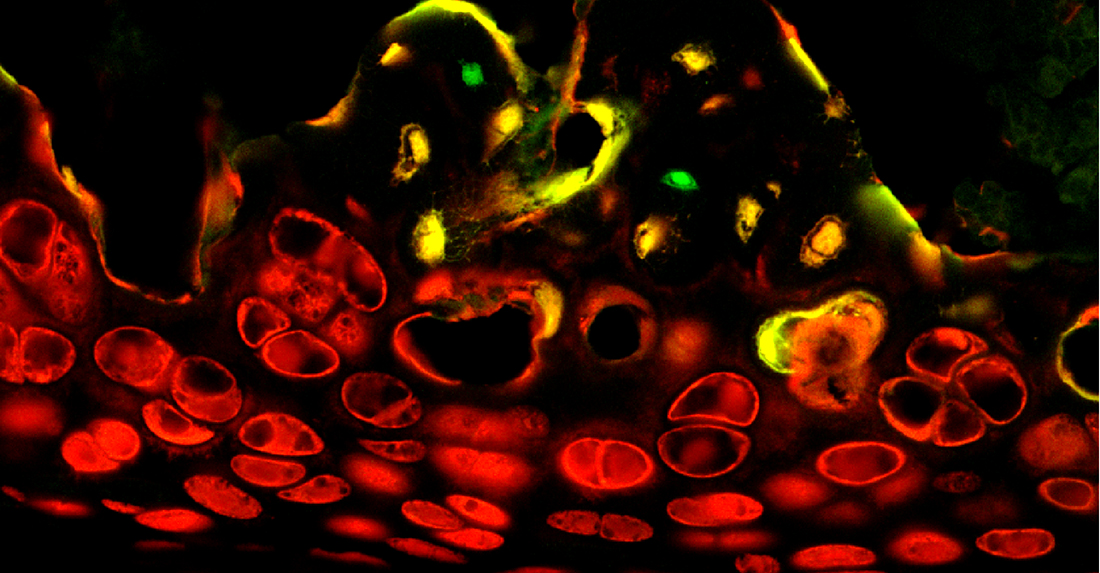Artistic accolades

Research from Texas A&M University College of Dentistry has not only begun to unravel the dogma on bone formation in the temporomandibular joint. It’s also created a beautiful work of art in the process.
That makes two eye-opening results for research from the lab of Dr. Jerry Feng, professor in biomedical sciences. It started when Feng, together with Dr. Robert Hinton, Regents Professor emeritus, and Dr. Yan Jing, postdoctoral research associate, suspected that the longstanding theory on bone formation in the temporomandibular joint may not be accurate.
This school of thought holds that chondrocytes — cartilage cells — make cartilage, and bone cells make bone. Further, the common belief is that cartilage cells die prior to the formation of bone. The researchers’ findings, published in the Journal of Dental Research, revealed that contrary to these theories, chondrocytes do not die. Rather, they directly transform into bone cells.
The scientists’ means of proving this idea utilized confocal microscopic images of transgenic mouse models, as cells tagged with reporter genes revealed the merging of bone and cartilage proteins seen in representative shades of red and green, one for each type of protein. The image, which graced the cover of the December 2015 JDR, was convincing in more ways than one. The journal’s publications committee and the Joint International Association for Dental Research/American Association for Dental Research Board of Directors selected it as the JDR Cover of the Year, an honor that was presented this month during the IADR meeting in Seoul, South Korea.
The award-winning article prompted a separate review, also published in the December 2015 issue of the journal. In it, the reviewers, from Harvard and the Stowers Institute for Medical Research, comment on the potential impact of the findings: “Therefore, the work from Jing, et al, provides new information that could advance less invasive cranial bone regeneration and repair.”